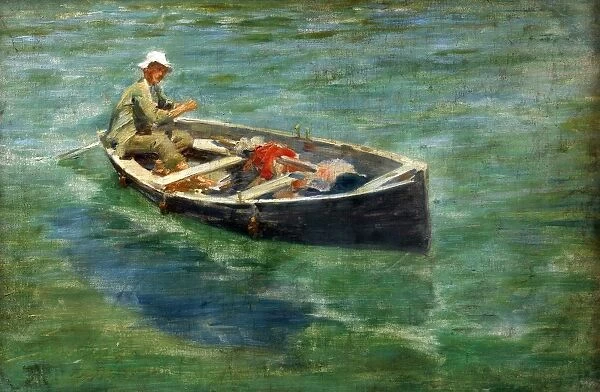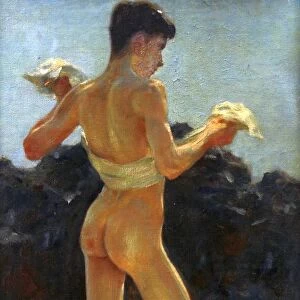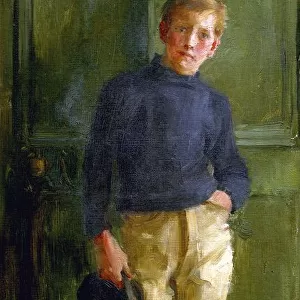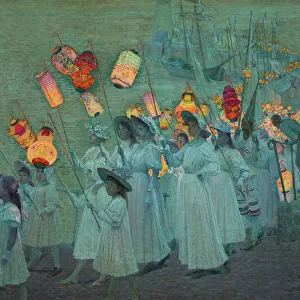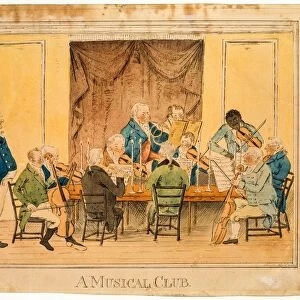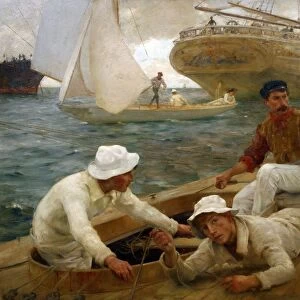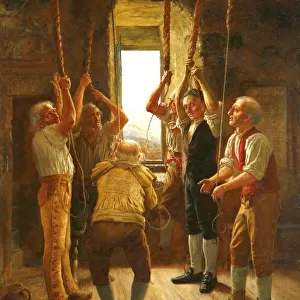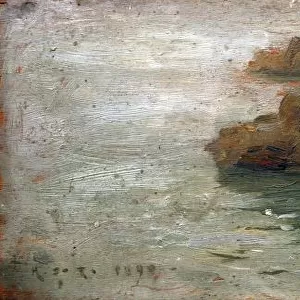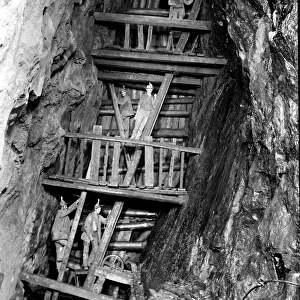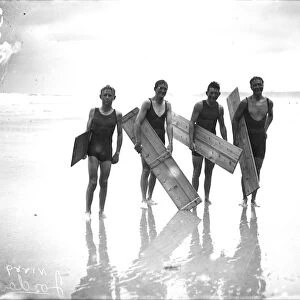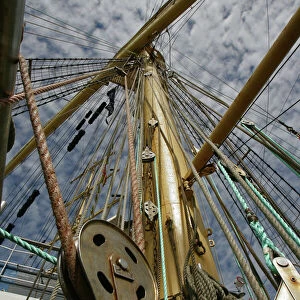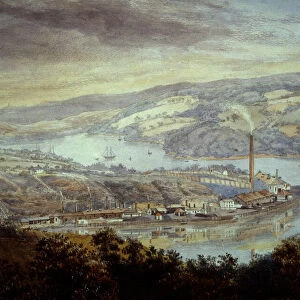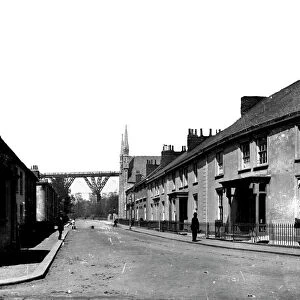Rights Managed > Royal Cornwall Museum > Fine Art
Green Waters, Henry Scott Tuke (1858-1929)
Filename: TRURI-1977-34-123.tiff
Size: 3067 x 2005 (3.2MB)
Date: 29th August 2019
Source: Royal Cornwall Museum
© RIC
![]()

Wall Art and Photo Gifts from Royal Cornwall Museum
Green Waters, Henry Scott Tuke (1858-1929)
Oil on canvas, Newlyn School, late 19th / early 20th century. A man sculling in a small boat. Henry Scott Tuke was born into a Quaker family in Lawrence Street, York. In 1859 the family moved to Falmouth, where his father Daniel Tuke, a physician, established a practice. Tuke was encouraged to draw and paint from an early age and some of his earliest drawings, aged four or five years old, were published in 1895. In 1875, he enrolled in the Slade School of Art. Initially his father paid for his tuition but in 1877 Tuke won a scholarship, which allowed him to continue his training at the Slade and in Italy in 1880. From 1881 to 1883 he was in Paris where he met the artist Jules Bastien-Lepage, who encouraged him to paint en plein air (in the open air) a method of working that came to dominate his practice. While studying in France, Tuke decided to move to Newlyn, Cornwall where many of his Slade and Parisian friends had already formed the Newlyn School of painters. He received several lucrative commissions there, after exhibiting his work at the Royal Academy of Art in London. In 1885, he returned to Falmouth where many of his major works were produced. He became an established artist and was elected to full membership of the Royal Academy in 1914. Tuke suffered a heart attack in 1928 and died in March 1929. In his will he left generous amounts of money to some of the men who, as boys, had been his models. Today he is remembered mainly for his oil paintings of young men, but in addition to his achievements as a figurative painter, he was an established maritime artist and produced as many portraits of sailing ships as he did human figures. He was a prolific artist, over 1, 300 works are listed and more are still being discovered
Royal Cornwall Museum is the UK's Greatest Museum For Cornish Life & Culture
TRURI : 1977.34.123
Media ID 19240682
© RIC
Artist Artwork Blue Boat Boats Brown Cornwall Cream Green Grey Orange Portrait Rowing Water White Genre Scull
EDITORS COMMENTS
Green Waters, Henry Scott Tuke (1858-1929) captures the serene beauty of a man sculling in a small boat amidst calm emerald waters. This oil on canvas masterpiece is an exemplary piece from the late 19th to early 20th century Newlyn School, known for its en plein air technique. Born into a Quaker family in York, Tuke's passion for art was nurtured from an early age. His talent blossomed during his time at the Slade School of Art in London and through his encounters with influential artists like Jules Bastien-Lepage in Paris. Inspired by their advice, he moved to Newlyn, Cornwall where he joined the renowned group of painters known as the Newlyn School. Tuke's artistic prowess extended beyond figurative painting; he also excelled as a maritime artist and produced numerous portraits of sailing ships. His work gained recognition after being exhibited at the Royal Academy of Art in London and earned him commissions that solidified his reputation. In addition to his artistic achievements, Tuke displayed great compassion towards those who had modeled for him during their youth. In his will, he generously provided financial support to these individuals. Today, Henry Scott Tuke is celebrated not only for his portrayals of young men but also for his extensive body of work comprising over 1,300 listed pieces. As we admire 'Green Waters, ' we are reminded of Tuke's profound impact on both figurative and maritime art.
MADE IN THE USA
Safe Shipping with 30 Day Money Back Guarantee
FREE PERSONALISATION*
We are proud to offer a range of customisation features including Personalised Captions, Color Filters and Picture Zoom Tools
SECURE PAYMENTS
We happily accept a wide range of payment options so you can pay for the things you need in the way that is most convenient for you
* Options may vary by product and licensing agreement. Zoomed Pictures can be adjusted in the Cart.

